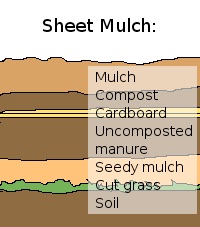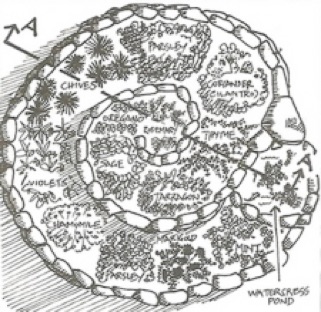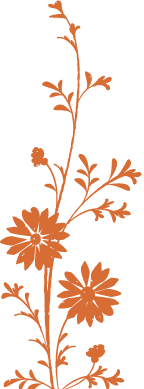Permaculture



Permaculture (permanent agriculture) is the conscious design and maintenance of agriculturally productive ecosystems which have the diversity, stability, and resilience of natural ecosystems. It is the harmonious integration of landscape and people providing their food, energy, shelter, and other material and non-material needs in a sustainable way. Without permanent agriculture there is no possibility of a stable social order.
Permaculture design is a system of assembling conceptual, material, and strategic components in a pattern which functions to benefit life in all its forms.
The philosophy behind permaculture is one of working with, rather than against, nature; of protracted and thoughtful observation rather than protracted and thoughtless action; of looking at systems in all their functions, rather than asking only one yield of them; and allowing systems to demonstrate their own evolutions.
What is Permaculture?

Keyhole Beds
Herb Spiral
Sheet Mulching



Keyhole Beds
This is a great explanation of keyhole beds from a book on small-scale permaculture called Gaia’s Garden A Guild to Home-Scale Permaculture by Toby Hemenway:
“If we bend that rectangular raised bed into a circle -- or more accurately, a horseshoe shape -- even more path will disappear. By a simple trick of topology, the path shrinks to a tiny keyhole shape, which gives this space-saving garden layout it’s name: keyhole bed.
Here’s what happens. If we wrap a typical 4-by-15 foot raised bed into a circle with a small opening for a path, we cut the path down from about 22 square feet (figuring an 18-inch-wide path down one side of the raised bed) to 6 square feet. Less than a quarter of the ground is surrendered to paths. I won’t torture you with the math that would prove this to the skeptical -- as any publisher knows, each successive equation in a text puts half the remaining readers to flight.
Keyhole beds have aesthetics as well as mathematics going for them. Bringing curves into a garden eliminates that “soybean field” quality that emanates from ruler-straight beds ands rows. With the exception of falling apples and other gravity-driven phenomena, nature never takes the shortest distance between two points. Instead, nature meanders, drifting in lazy undulations from here to there. It’s humans who have become enamored of the unswerving, direct route. But in our gardens, we meet nature more or less on her terms. Just as a straight stretch of interstate highway invites narcolepsy, linear gardens are monotonous too. Curves and circles give surprise and whimsy to a garden. What a bonus that they happen to be more efficient.
One more benefit of keyhole beds: if we point the central path toward the south and locate tall plants such as tomatoes or sunflowers at the back, or northern edge, the bed creates a U-shaped sun bowl that traps warmth. The toasty microclimate inside is a good place for tender or heat-loving varieties.
Herb Spiral
Another excerpt from Gaia’s Garden about Herb Spirals:
“An herb spiral coils up 20 to 30 linear feet of path side plants into a roundish pattern about 5 feet across. And it’s not just a flat spiral, either. An herb spiral begins as a mound of good soil about 3 feet high and 5 feet across. To turn this mound into a spiral, place fist-to-head-sized rocks in a spiral pattern that winds from the bottom inward to the top. Leave about a foot of soil between the tiers of the rock spiral.
Now it’s time to install the herbs, winding them up the spiral. This coils about 30 linear feet of row into a much smaller space. All the herbs can grow right outside the door, using only the path space necessary to walk around the spiral. Plus, mounding up the soil means we can reach the central herbs without bending over very far.
But this new pattern does much more than save space and effort. The herb spiral has slopes that face in all the directions of the compass. The south-facing slope will be hotter than the north. The east-facing slope, which gets morning sun, will dry out earlier in the day than the west one. The soil at the bottom will stay wetter than that at the top. we’ve created an herb garden with different microclimates. So we plant accordingly, locating each herb in a suitable environment, Varieties that thrive in hot, dry climates, such as oregano, rosemary and thyme, go on the sunny south side near the top. Parsley and chives, which prefer cooler, moister climates, find a home on the north side. Coriander, which seems to bolt in too much hot sun, can be stationed on the east side, protected from the afternoon scorching. Other herbs can snuggle into their best sites as well.”
Sheet Mulching
We can implement several permaculture techniques into your garden setting.
Below, you will find out what is Permaculture, and learn more about three techniques that can be easily applied in your garden.
Please also refer to the Videos page to view You Tube videos about Permaculture.
More from this valuable resource, Gaia’s Garden:
“ Sheet mulching is one of the basics in the ecological gardener’s tool kit. It’s a method of eradicating weeds and building soil that eliminates herbicides and avoids tilling, both of which rupture soil ecology. Sheet mulching is a variation on nature’s way of building soil by accumulating and breaking down organic debris from the top down.
In it’s simplest form, sheet mulching is a two-step process: First, apply a layer of weed-suppressing newspaper or cardboard (or even cloth or wool carpet), and then top it with about a foot of organic mulch. Ideally this is done in fall, so that the mulch rots to become humusy earth over the winter. Also, the weed-stopping layer breaks down enough to let spring-planted seeds and transplants thrust their roots deep into the earth.




